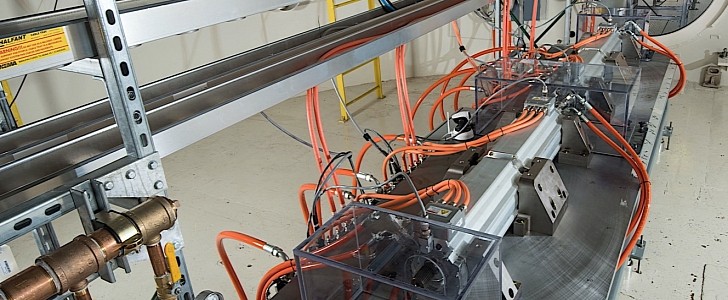For a while now, the American space agency has been preoccupied not only with the exploration of space, but also with making air travel here on Earth faster, and at the same time more fuel-efficient. Its QueSST plane research, for instance, is being conducted to see if we can’t bring back civilian supersonic flight.
But there’s another project in the works, one called Hybrid Thermally Efficient Core (HyTEC). Its goal is the create a new generation of turbofan aircraft engines that can achieve up to four times the power extraction levels of today’s top engines, while at the same time burning up to 10 percent less fuel.
The best way to do this, says NASA, in increasing the bypass ratio, which is making the fan in front of the engine bigger to allow increased airflow, but at the same time reducing the size of the engine core to reduce consumption.
To speed up the research, NASA says it partnered with Honeywell to “perform technology development and testing on an advanced low-pressure turbine.“ The data collected will be used to “establish a turbofan power extraction baseline while also developing computational prediction tools.”
Separately, the space agency signed a contract with GE that will help it “demonstrate and assess turbofan power extraction and integrating electric machines like motors and generators.”
“Once HyTEC and its partners demonstrate power extraction, these new engines can be combined with other megawatt-class components we’re developing for electrified aircraft propulsion,” said in a statement Barbara Esker, AAVP’s deputy program director.
“Together with advances in high-rate composite aircraft manufacturing and innovative configurations like the transonic truss-based wing, NASA can transform the long-term sustainability of commercial aircraft.”
As for the QueSST project, the last major milestone was reached in September 2019, when NASA and Lockheed Martin’s Skunk Works completed the critical design review for the aircraft.
The best way to do this, says NASA, in increasing the bypass ratio, which is making the fan in front of the engine bigger to allow increased airflow, but at the same time reducing the size of the engine core to reduce consumption.
To speed up the research, NASA says it partnered with Honeywell to “perform technology development and testing on an advanced low-pressure turbine.“ The data collected will be used to “establish a turbofan power extraction baseline while also developing computational prediction tools.”
Separately, the space agency signed a contract with GE that will help it “demonstrate and assess turbofan power extraction and integrating electric machines like motors and generators.”
“Once HyTEC and its partners demonstrate power extraction, these new engines can be combined with other megawatt-class components we’re developing for electrified aircraft propulsion,” said in a statement Barbara Esker, AAVP’s deputy program director.
“Together with advances in high-rate composite aircraft manufacturing and innovative configurations like the transonic truss-based wing, NASA can transform the long-term sustainability of commercial aircraft.”
As for the QueSST project, the last major milestone was reached in September 2019, when NASA and Lockheed Martin’s Skunk Works completed the critical design review for the aircraft.


